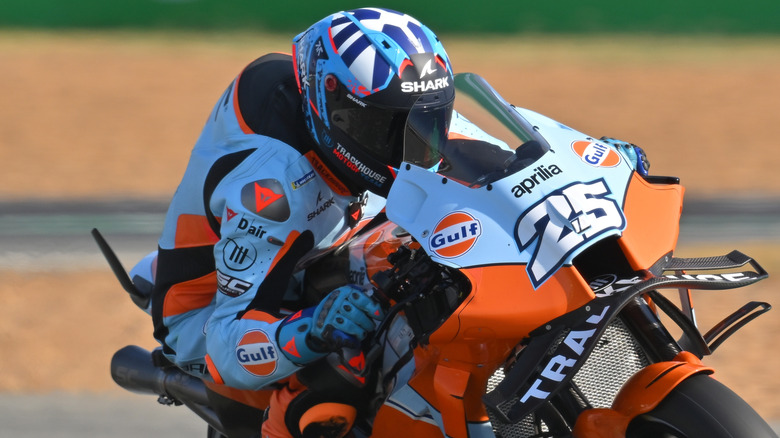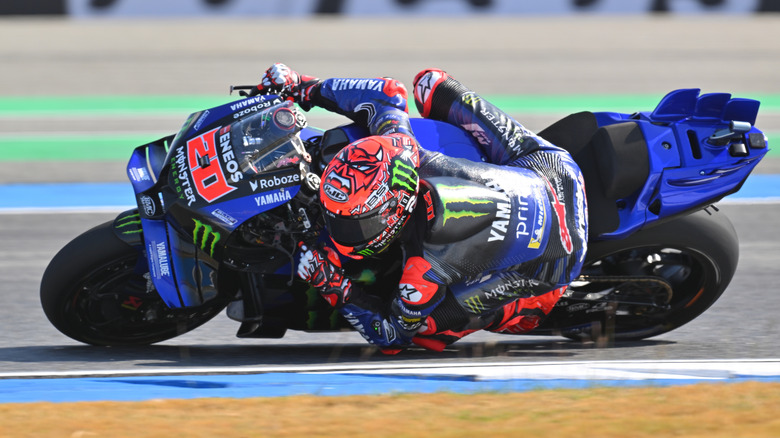Why Do Motorcycle Racing Suits Have A Hump At The Back?
MotoGP racing is regarded as one of the fastest and most dangerous motorsports in the world. With innovative technologies, popularity, and fierce competition, MotoGP is regarded as the highest level of motorcycle racing. Featuring only the top riders and the racing versions of some of the world's fastest motorcycles, the highly advanced 1000cc bikes are pushed to their limits during the 45 or 60-minute race. To ensure the safety of the riders, MotoGP riders wear highly advanced racing suits featuring a hump on its back called a speed hump that is both a performance and safety feature.
The origins of the hump date to the late 80s, when the Italian motorcycle safety gear company Dainese was researching ways for improved rider protection. The hump was an evolution of an earlier Dainese invention, the back protector, when the company added a hump to protect the T12, or last thoracic vertebra. This new feature was first used by Italian rider Pierfrancesco Chili in 1988, and soon, other features for the hump were added. One of the first developments was a result of the improved aerodynamics and rider energy conservation that French rider Jean Philippe Ruggia noted when he wore a suit with the hump.
This then led Dainese to consider two distinct uses for the hump, one for aerodynamics, and the second for rider protection, and as a result, the hump became longer to merge protection for the riders back, helmet and the tank. By the 2000s, new technologies were gradually integrated into the hump, including an airbag control unit and sensor, rider vital sign monitoring systems, cooling and ventilation systems, and a hydration pack. The latest development for the hump was introduced in 2016, when emergency LED lights that activate during accidents were installed.
Stylish and advanced protection
The benefits of the speed hump for motorcycle riders begin with the enhanced aerodynamics that improve airflow over the rider's body, and also aids in maintaining the ideal riding posture. This lowers drag and enables riders to maintain faster speeds with less exertion, as every amount of resistance can impact performance and bike handling. In addition, the hump provides an extra layer of protection for riders in the event of an accident or fall because of its ability to absorb impact that could injure the neck and spine area.
As previously mentioned, some motorcycle suits, including those from Dainese, have built-in hydration systems in their humps. These help the health and safety of riders by enabling them to stay hydrated throughout races or rides without stopping or reaching for water bottles. Humps also improve rider visibility with the LED lighting and reflective materials that are incorporated into the design. This added visibility reduces the probability of accidents, which greatly improves rider safety.
Together with the advanced helmets worn by the MotoGP riders, the specialized racing suits are a critical component for rider safety and survivability, which also improves performance. The progressive design and high-end materials they are made from improve stability and reduce drag at high speeds, while also providing safety in the event of a collision by shielding riders from collisions, abrasions, and weather conditions at high speeds. Lastly, the suits also help with rider comfort by having features like cooling systems and breathability that help control body temperature. The MotoGP suits of today have evolved from basic protective gear to sophisticated devices that utilize cutting-edge materials and technology, like the speed hump to keep riders safe on the track.

